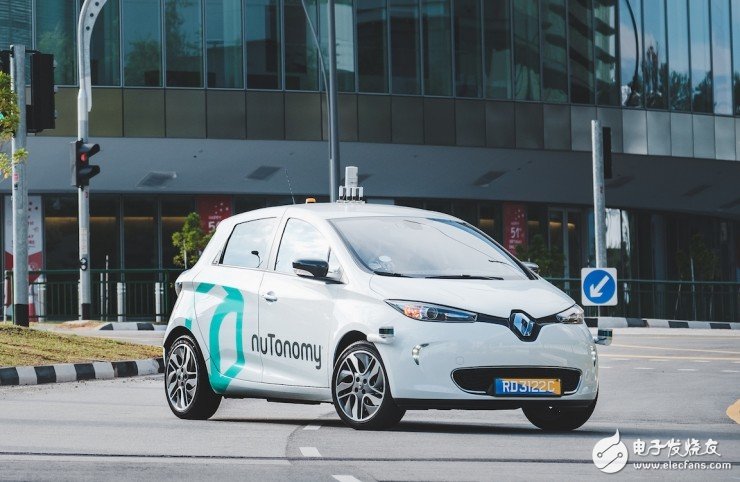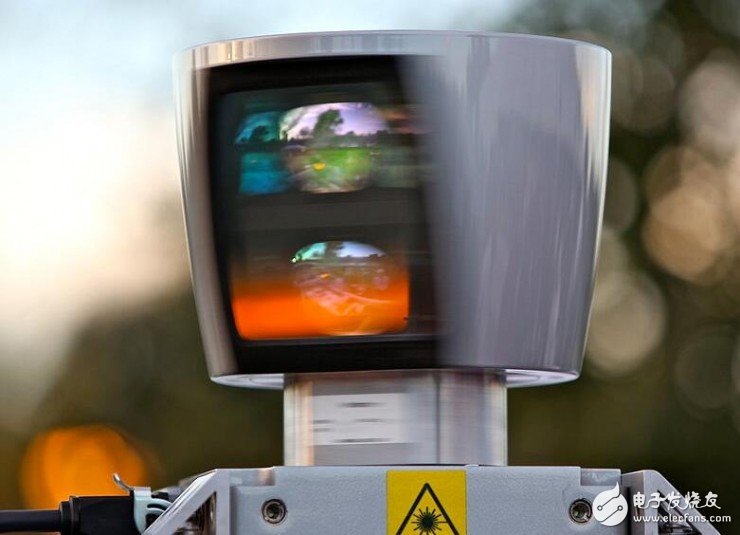Although the concept of autonomous driving is hot, most people may not have seen a self-driving car running alive on the road.
However, if you are fortunate enough to see you, the first thing that will attract you is not that there is anyone in the driver's seat, but the sensor that rotates on the roof of the car – the lidar. This "guy" can be regarded as the "eye" of a self-driving car, which can help the vehicle to detect the surrounding environment, but at the same time it is also a roadblock on the road of autonomous vehicles, because the price of laser radar is not cheap.
Although the system is expensive and complicated at present, in the next few years, its price and reliability will develop in the direction we hope to promote the popularization of autonomous driving technology.
As the name suggests, Lidar and radar are close relatives. They are all inductive technology, using laser pulses to detect surrounding objects, but the radar radar's detection range is not wide, and because of the shorter wavelength, the resolution of the laser radar is also higher. It is this reliable and high-quality data collection that makes lidar the first choice for most autonomous driving systems, and many experts even believe that laser radar should be the standard for autonomous vehicles.

“Lidar is a key sensor for autonomous vehicles because it meets the vehicle's need for accuracy and positioning under a variety of conditions,†explains IG Toma, CEO of nuTonomy, who is testing self-driving cars in Singapore. However, Aegnima pointed out that the size, complexity and cost of laser radar are now hindering its marketization.
At the moment, most autonomous vehicles are equipped with the HDL-64E laser radar from Velodyne, which scans 2.2 million data points per second in the field of view and also locates objects within 120 meters. Accuracy is up to centimeter level.

Powerful is tough, but the weight of such a sensor is 13 kilograms, and the unit price is as high as 80,000 US dollars (you can buy Tesla soon).
This year, Velodyne introduced the new Lidar VLP-32A, which covers a range of 200 meters around the vehicle and weighs only 600 grams. Most importantly, if mass production is available, the price of this lidar will drop to around $500. Although the price has fallen sharply, it is still expensive for the price-sensitive consumer market.
In the face of this problem, everyone has made suggestions, and academics and industry are thinking about how to reduce the size of the laser radar, simplify manufacturing steps and lower the price.
At CES earlier this year, Quanergy Systems from Sunnyvale demonstrated a solid-state lidar prototype developed specifically for autonomous vehicles. The laser radar uses an optical phased array to spread the laser pulses so that the entire system does not have to be rotated all the time. Quanergy expects the price of this laser radar to drop to a minimum of $250 and will be available in early 2017.
At the same time, two startups are also on the road to low-cost lidars, and their new systems are expected to be as low as $100, and will be officially available in 2018.
In addition, Israel's Innoviz (high-resolution, wide-field) and Dutch Innoluce (using a micro-electromechanical reflex system instead of solid-state radar) also have their own killers.

(Optical micrographs show MIT Solid State Lidar, 0.5 mm & TImes; 6 mm silicon photonic chip with guided transmission and reception phased array antennas and on-chip germanium detectors. Image credit: Christopher V. Poulton)
In fact, it is necessary to say that the laser radar system can be seen in the near future, and there are several MIT solutions. The program is part of the Electronic Photon Heterogeneous Integration Program of the US Department of Defense's Advanced Research Projects Agency. MIT researchers use silicon photonics to compress a lidar system into a 0.5-6 mm chip. Although MIT's prototype product has a field of view of only a few meters, it is not difficult to expand to 100 meters in the future. The most important thing is that the chip is priced at only $10.
The demand for miniaturized, low-cost solid-state laser radar is staggering. In August alone, Quanergy received a $90 million investment and its valuation reached $1.59 billion. In addition, Ford and Baidu teamed up to invest $150 million in Velodyne. Vendors are investing heavily in the coming days to come up with a lidar solution for around $100.
In addition to the big gold industry, the future miniaturization and low-cost laser radar can benefit many industries. If you integrate them into your smartphone, you can get high-precision motion recognition and completely change the way we interact.
In addition, the implantation of lidars into the robot's fingers also makes them more flexible at work. In the field of drones, it also improves the ability of the product to avoid obstacles and help the drone safely complete the package delivery task.
This article was compiled from IEEE Spectrum, and the original title is: Cheap Lidar: The Key to Making Self-Driving Cars Affordable.
Hydraulic Power Unit For Warehousing,Closed Center Hydraulic Valve,Energy Hydraulic Valve Parts,Air Operated Hydraulic Valve
CHANGZHOU ROHN HYDRAULIC SCI-TECH CO.,LTD , https://www.rohnhydraulic.com
